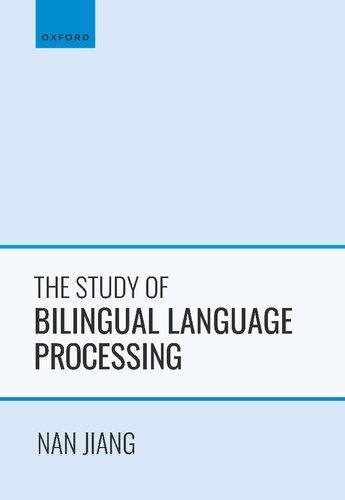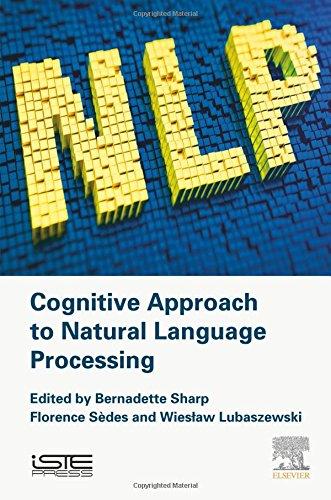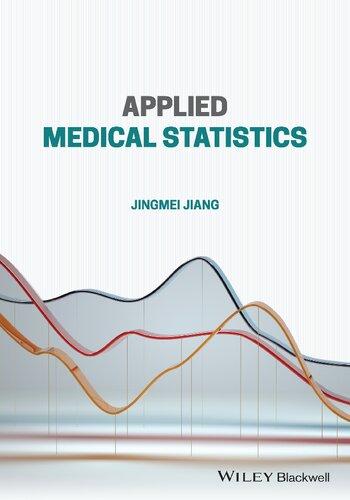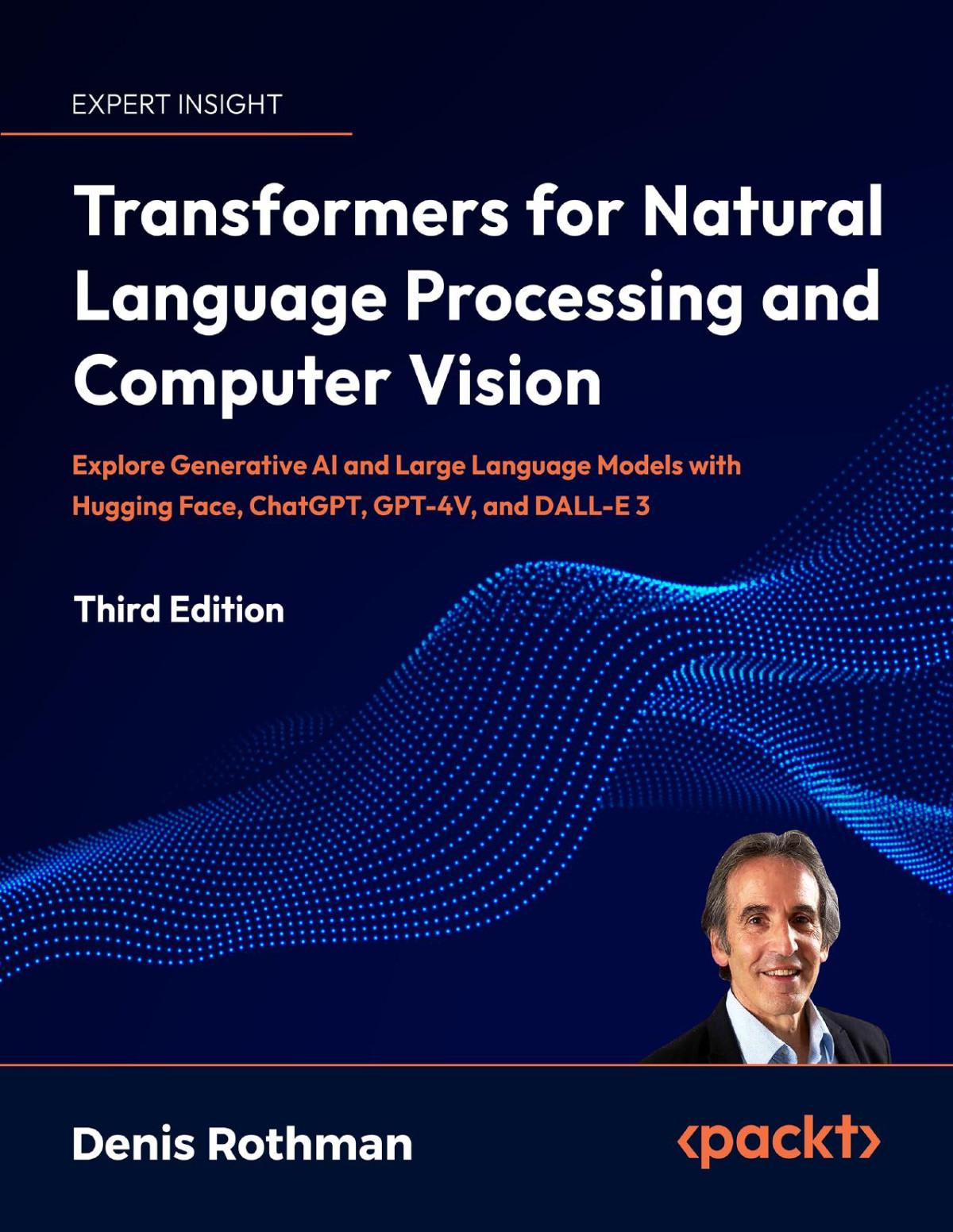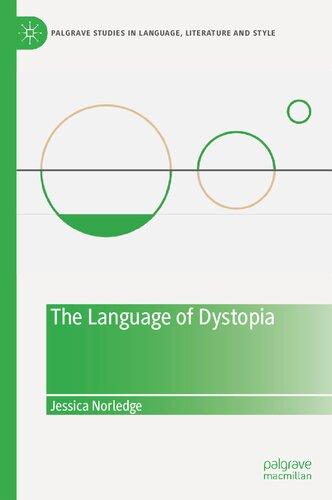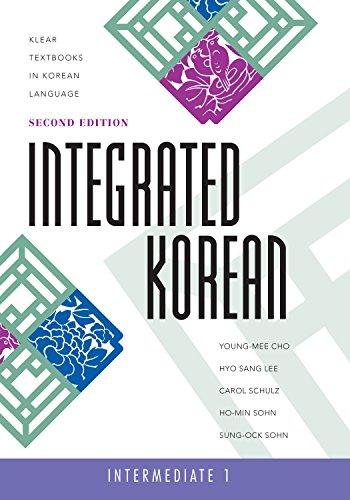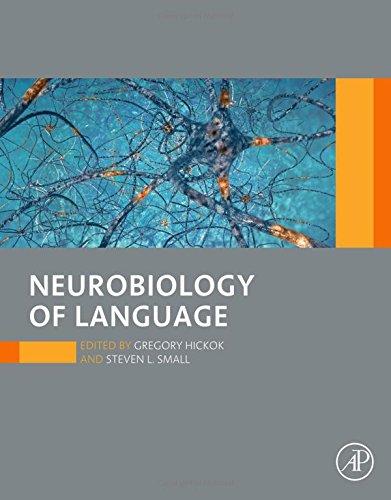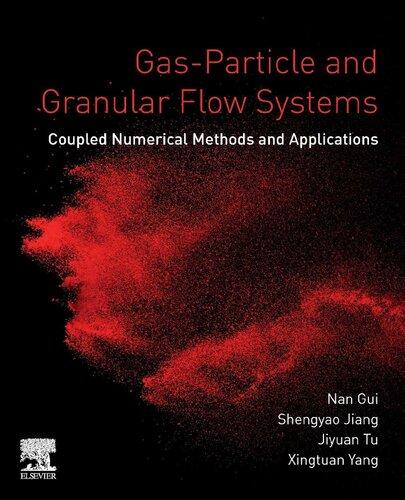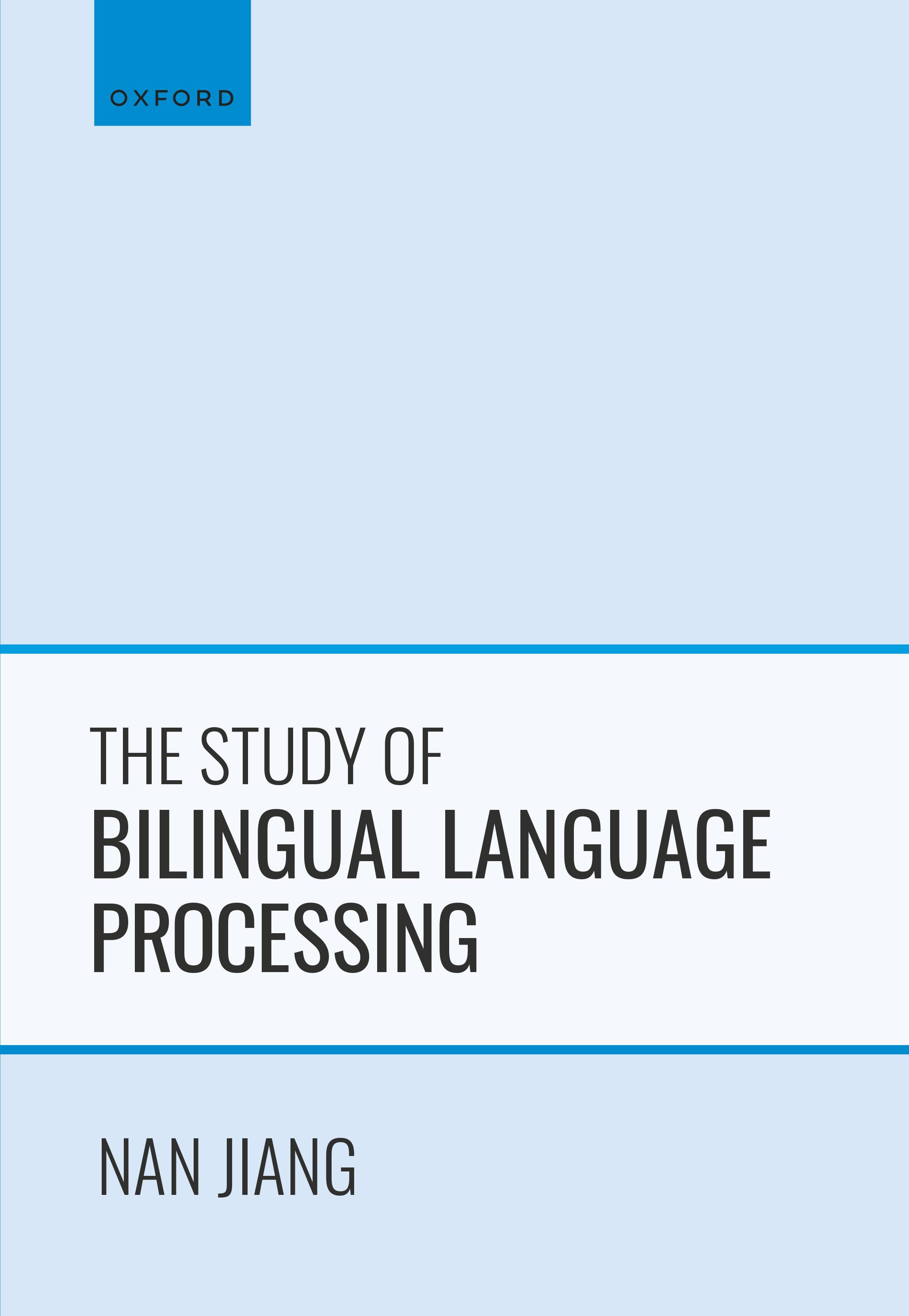TheStudyofBilingual LanguageProcessing
NANJIANG
GreatClarendonStreet,Oxford,OX26DP, UnitedKingdom
OxfordUniversityPressisadepartmentoftheUniversityofOxford. ItfurtherstheUniversity’sobjectiveofexcellenceinresearch,scholarship, andeducationbypublishingworldwide.Oxfordisaregisteredtrademarkof OxfordUniversityPressintheUKandincertainothercountries ©NanJiang2023
Themoralrightsoftheauthorhavebeenasserted
Allrightsreserved.Nopartofthispublicationmaybereproduced,storedin aretrievalsystem,ortransmitted,inanyformorbyanymeans,withoutthe priorpermissioninwritingofOxfordUniversityPress,orasexpresslypermitted bylaw,bylicenceorundertermsagreedwiththeappropriatereprographics rightsorganization.Enquiriesconcerningreproductionoutsidethescopeofthe aboveshouldbesenttotheRightsDepartment,OxfordUniversityPress,atthe addressabove
Youmustnotcirculatethisworkinanyotherform andyoumustimposethissameconditiononanyacquirer
PublishedintheUnitedStatesofAmericabyOxfordUniversityPress 198MadisonAvenue,NewYork,NY10016,UnitedStatesofAmerica BritishLibraryCataloguinginPublicationData Dataavailable
LibraryofCongressControlNumber:2022948847
ISBN978–0–19–885238–4
ISBN978–0–19–885251–3(pbk.)
DOI:10.1093/oso/9780198852384.001.0001
Printedandboundby
CPIGroup(UK)Ltd,Croydon,CR04YY
LinkstothirdpartywebsitesareprovidedbyOxfordingoodfaithand forinformationonly.Oxforddisclaimsanyresponsibilityforthematerials containedinanythirdpartywebsitereferencedinthiswork.
1.Introducingbilingualprocessingresearch
1.1.Characterizingbilingualprocessingresearch
1.1.1.Abroaddefinitionofbilingualism
1.1.2.Aclearfocusonthecognitiveaspectofbilingualism
1.1.3.Awell-definedsetofresearchquestions
1.1.4.Arichrepertoireoflab-basedresearchparadigms
1.1.5.Anoverlapwithsecondlanguageprocessing
2.Lexico-semanticorganizationinbilinguals
2.1.Oneortwolexicons?
2.2.2.1.Theconcretenesseffect
2.3.Conceptualizinglexico-semanticconnectionsinbilinguals
2.3.1.Wordassociationversusconceptmediation
2.3.2.Thebilingualdual-codingtheory(BDCT)
2.3.3.Therevisedhierarchicalmodel(RHM)
2.4.1.ExaminingdirectsemanticaccessinL2processing
2.4.1.1.SemanticeffectsinL2processingtasks
2.4.1.2.SemanticeffectsandL2proficiencies
2.4.2.ComparingsemanticaccessinL1andL2processing
2.4.2.1.Interlingualsemanticprimingstudies
2.4.2.2.TheprocessingofemotionalwordsinL1andL2
2.4.2.3.Falsememorystudiesinbilinguals
2.5.Conclusion:Inneedofamorenuancedtheoryofsemanticrepresentation
3.2.1.Theemergenceofasymmetryinmaskedpriming
3.2.2.Moderatingvariables
3.3.Explainingasymmetryintranslationpriming
4.Selectivityinlexicalaccessinbilinguals
4.1.Theemergenceofthetopic
4.2.Conceptualizingselectivityinbilinguallexicalaccess
4.2.1.Bilingualmodeloflexicalaccess(BIMOLA)andthelanguage modehypothesis
4.2.2.Thebilingualinteractiveactivation(BIA)modelandits successors
4.3.Examiningselectivityinbilinguallexicalaccess
4.3.1.Theweakandstrongversionsofthenonselectiveaccess hypothesis
4.3.2.Testingtheweakversion:Arebilingualsabletoignorea task-irrelevantlanguage?
4.3.3.Testingthestrongversion:Lookingfortheeffectofahidden language
4.3.3.1.Evidenceforandagainstthestrongversion
4.3.3.2.Thecaseofinterlingualhomographsandhomophones
4.3.3.3.Moderatingvariables
4.3.4.Different-scriptbilingualsandsharedphonology
5.Languageswitchandcontrolinbilinguals
5.1.Examiningcodeswitching
5.1.1.AsymmetryinswitchcostsinL1andL2production
5.1.2.AnL2advantageinmixed-languageproduction
5.1.3.Mixingcosts
5.1.4.Moderatingvariables
5.1.4.1.Preparationtime
5.1.4.2.Predictability
5.1.4.3.Valence
5.1.4.4.Taskrequirement:Comprehensionversusproduction
5.2.Conceptualizinglanguageswitchingandcontrol
5.2.1.Hypothesesandmodelsoflanguageswitchingandcontrol
5.2.2.Theroleofinhibitioninswitchcosts
5.2.3.Thelocusofinhibitionandswitchcosts
5.3.Conclusion
6.Bilingualismbeyondlexicalprocessing
6.1.Autobiographicalmemoryinbilinguals
6.2.Therepresentationandinteractionofsyntacticknowledgeinbilinguals
6.3.Consequencesofbilingualism
6.3.1.Linguisticconsequences
6.3.2.Cognitiveconsequences
6.3.2.1.Cognitiveflexibility
6.3.2.2.Inhibitorycontrol
6.4.Conclusion
Preface
Thephenomenonofbilingualismisnotnew,andthescientificstudyofthisphenomenondatesbackatleasttoJamesMcKeenCattell’s(1887)researchonthe associationofideaswhenhetestedhimselfinhisnativeandnonnativelanguages. However,itwasinthe1980swhenthisresearchreallytookoff,andbilinguallanguage processingresearchhasbecomeoneofthemostactivelyresearchedareasofpsycholinguisticsandcognitivescienceinthelastthreedecades.Theoutpouringofthisresearch canbeseeninthepublicationofseveralmajoreditedvolumesshowcasingadvancesin thisresearch,butasingle-authoredbookthatoffersacomprehensiveandintegrated overviewofthisresearchishardtocomeby.Thisbookisintendedtofillthisvoid. Itisintendedasaresourcebookoratextbookforstudents,scholars,andpractitionerswhoareinterestedinfamiliarizingthemselveswiththecurrentresearchonthis complicated,multifaceted,andintriguingphenomenonfromacognitiveperspective.
Thebookwasmostlywrittenin2021whenayear-longsabbaticalleaveallowedme tofreemyselffromteachingobligationsandthecovidpandemicpreventedmefrom goinganywhere.However,manyyearswentintothepreparationwhenIwasfortunate enoughtoteachaPh.D.seminaronthistopicmultipletimesovertheyears.Giventhe amountofpublishedresearchinthisarea,anyattemptforacomprehensiveoverview willbeonlypartiallysuccessful.Istrivetobecomprehensiveandbalanced,butIam alsoatthemercyofmyownlimitedscopeofreadingandknowledgeandofthetime andspaceconstraintsofthisproject.Whatgetsordoesnotgetintothebook,the topics,themodelsandhypotheses,andindividualstudies,istheoutcomeofmany considerationsandconstraints.
IamgratefultoKennethForsterforopeningmyeyestothisresearchareaandfor beingarolemodelasascholar.IamalsoindebtedtoJudithKrollforanopportunity toworkinherlabandforherworksthathavekeptmeinspiredandconnectedto thearea.IalsoappreciatedtheparticipationofthestudentsinmyPh.D.seminar inbilinguallanguageprocessingthroughouttheyears.Workingwiththemontheir courseprojects,qualifyingpapers,anddissertationshashelpedmestayupdatedon whatisgoingoninthisresearch.AninvitationfromJohnSchwietertocontribute to TheCambridgeHandbookofBilingualProcessing (CUP,2015)gavemethefirst opportunitytotakeapanoramicaswellasahistoricalviewofthisresearchandto gathertheinitialsetofmaterialsforwritingthisbook.Finally,thisbookwouldnot havebeenpossiblewithoutthepatienceandsupportofmywifeGuilingandmynow eleven-year-olddaughterStephanie.
Introducingbilingualprocessingresearch
Abilingualspeaker,bydefinition,canunderstandandspeaktwolanguages.Individualsbecomebilingualunderavarietyofcircumstances.Achildmaygrowupina bilingualcommunity,e.g.,whereCatalanandSpanishorCantoneseandMandarin Chinesearewidelyspoken,andasaresult,pickupbothlanguagesinchildhood.A monolingualchildmaylearnaforeignlanguageasaschoolsubjectandcontinueto usethelanguageforemploymentorrecreationalreasonslaterinlife.Immigrantsmay havetolearnthelanguageofthenewcountryandtheirchildrenmaybeexposedtoone languageathomeandanotheroutsideofhome.Thepopulationofbilingualspeakersis growing.IntheUSA,forexample,the2018censusdata(accessibleatdata.census.gov) showthatthenumberofindividualswhospeakalanguageotherthanEnglishathome hasgrownfrom23milliontoover67millionfrom1980to2018,whichinpercentage termsrepresentsanincreasefrom11%to21%ofthepopulation.AccordingtoanEU reportpublishedin2012,54%ofEuropeansareabletoholdaconversationinatleast oneforeignlanguage.¹ Eventhoughspecificfiguresaredifficulttoobtainaboutthe worldpopulation,itisgenerallybelievedthatmorethanhalfoftheworldpopulation isbilingualormultilingual.
Thephenomenonofbilingualismraisesmanysocial,political,economic,and educationalissues.Fromacognitiveperspective,bilingualismraisestheinteresting questionofhowthehumanmindhandlestwoormorelanguages.Thisiswhatbilinguallanguageprocessing(BLP)researchisabout.Asaresearcharea,itexplores howthelinguisticknowledgeofmultiplelanguagesisstoredinabilingualspeaker’s mindandhowsuchknowledgeinteractsinlanguageuse.BLPresearchersinvestigate issuessuchaswhetherwordsfromtwolanguagesarestoredtogetherorseparately,or whetherabilingualspeakercancompletelyturnoffalanguagewhileusingtheother. ThisisabookaboutBLPresearch.Thischapterprovidesanoverviewofthisfield,first bydiscussingwhatcharacterizesBLPresearchasadistinctfieldofscientificinquiry.It isfollowedbyahistoricsketchofthisresearchfromthe1950stothe1970s.Subsequent chapterswillreviewanddiscussthemajorissuesandrelatedfindingssincethe1980s.
1.1. Characterizingbilingualprocessingresearch
IndividualBLPresearchersexploredifferentresearchtopicsrelatedtobilingualism andtheymayadoptverydifferentmethodsinthisendeavor.However,inspiteofthe
¹ SeeSpecialEurobarometer386“EuropeansandtheirLanguages,”retrievableat<https://op.europa.eu/en/ publication-detail/-/publication/f551bd64-8615-4781-9be1-c592217dad83>.
TheStudyofBilingualLanguageProcessing.NanJiang,OxfordUniversityPress.©NanJiang(2023). DOI:10.1093/oso/9780198852384.003.0001
differencesinspecifictopicsandmethods,theirresearchischaracterizedbyseveral featuresthattogetherhelpdefinewhatBLPisasadistinctfieldofinquiry.Weconsider thesecharacteristicsbelow.
1.1.1. Abroaddefinitionofbilingualism
Differentpeoplemayhavedifferentdefinitionsofbilingualism.Accordingto Grosjean(1992),forexample,“Bilingualismistheregularuseoftwo(ormore)languages, andbilingualsarethosepeoplewhoneedandusetwo(ormore)languagesintheir everydaylives”(p.51).Suchadefinitionimpliesboththefrequencyandtheabilityof usingmultiplelanguagesforcommunication,aspointedoutbyFrancis(1999).InBLP research,theword bilingual (or bilingualism)isdefinedverybroadlytoincludeanyonewhoknowsmorethanonelanguage.Itcanrefertopeoplewhogrewupspeaking twolanguagesfromchildhoodandcontinuetospeaktwoormorelanguagesregularlyindailylife.Itcanalsorefertoindividualswholearnedasecondlanguage(L2) laterinlife,andhardlyusethelanguageforreal-lifecommunication.Itcanalsobe usedtorefertoindividualswhospeaknotonlytwobutalsomultiplelanguages.The underlyingassumptionofthisbroaddefinitionisthat,asfarasindividualsspeak morethanonelanguage,theessentialquestionofhowthedifferentlanguagesare linkedtoandinteractwitheachotherappliestothemall.Thus,fromaresearch perspective,theseindividualsareconsideredbilingualsandrepresentthepartofa potentialpopulationforstudyingbilingualprocessing.Atthesametime,bilingual speakersarenotalwaysahomogeneousgroupinreality.Theymaybedifferentiatedin multiplewaysbasedontheirdiverselanguagelearningprofiles.SomeofthesedifferentiationsfrequentlyencounteredintheBLPliteratureareexplainedbelowtoillustrate (a)thewideperspectiveBLPresearcherstakeindefiningbilingualism,and(b)how bilingualsaresometimesclassifiedinordertoexploreaspecificresearchquestionin anactualstudy.
Bilingualvs.multilingualspeakers. Theword bilingual isusedtorefertoanyone whocanspeakmorethanonelanguage.Thus,unlessitisindicatedotherwise,italso includesthosewhocanusemorethantwolanguages.InmostBLPstudies,researchers areprimarilyconcernedwiththefactthatanindividualspeakstwolanguages,typicallytheirnativeorfirstlanguage(L1)andanonnativeorsecondlanguage(L2). Forexample,individualsmaybeselectedtoparticipateinastudybecausetheyare bilingualspeaksofDutchandEnglish.Inthestudy,theymaybeaskedtoperform atranslationtaskbothfromDutchtoEnglishandfromEnglishtoDutch.Whether theseindividuals,orsomeofthem,alsoknowotherlanguagessuchasFrenchorGermanmaynotbegivenmuchconsiderationandmaynotbereported.However,under somecircumstances,itisveryimportantthattheparticipantsdonotknowanylanguageotherthanthetwounderinvestigation,astheknowledgeofadditionallanguages mayaffecttheirperformanceinabilingualtask.Underothercircumstances,multilingualspeakersmayberecruitedbecausearesearcherisinterestedintheinteractionof multiplelanguages.Forexample,researchershavefoundthatindividualsoftentake
longertocompletealinguistictaskwhentheyhavetoswitchbetweenlanguages. Toexplorewhetherthisdelayarisesfromtheinhibitionofanontargetlanguage(i.e.,a languagenotbeingused),researchershavetestedtrilingualspeakerswhoareaskedto eitherswitchbetweentwolanguagesinasequencesuchasLanguageA,LanguageB, andLanguageA(orLA—LB—LA)orswitchamongthreelanguagesinasequencesuch asLC—LB—LA.Iflanguageinhibitionisinvolvedinaswitchcost,wewouldexpecta longerdelayinrespondingtoanLA stimulusintheLA—LB—LA switchsequencethan tothesameitemintheLC—LB—LA sequencebecauseLA shouldbesuppressedmore intheformercaseduetoitsrecentactivation(seeSection 5.2.2 formoreinformation aboutthistopic).Inshort,theterm bilingual canbeusedtorefertobothbilingual (initsnarrowsense)ormultilingualspeakers(initsbroadersense).Whetherthis distinctionshouldbemadeinanactualstudywilldependonthepurposeandthe circumstances(e.g.,thedesign)ofaspecificstudy.
Simultaneousandsequentialbilinguals.Simultaneousbilingualsare,bydefinition, exposedtotwolanguagesatthesametime,usuallyearlyinlife,e.g.,byagethree. Sequentialbilingualsarethosewhohavelearnedanadditionallanguageafterthe establishmentofthenativelanguage.Iftheword bilingual usedtoreferprimarilyto simultaneousbilinguals,itisusedtorefertobothsimultaneousandsequentialbilingualsinBLPresearchtoday.Itisafairestimatethatsequentialbilingualshaveserved inamajorityofbilingualprocessingstudiesandthusrepresenttheprototypicalbilingualpopulationinthisresearch.Hence,unlessnotedotherwiseinastudy,onemay assumethatsequentialbilingualsareinvolvedinthestudy.However,becausesimultaneousbilingualsareexposedtobothlanguagesearlyinlifeandmorelikelytohave achievednativelikeproficiencyinbothlanguages,theycanbecontrastedwithsequentialbilingualsforstudyingtheroleofageofacquisition(AoA),languagebalance,and proficiencyinthisresearch.
Heritageandnonheritagebilinguals.Heritagebilingualspeakerstypicallyreferto sequentialbilingualswhoareexposedtotheirnativelanguageathomeandanL2 outsideofhomeandwhohavebecomeL2dominant.Nonheritagebilingualsare sequentialbilingualswhoremainL1dominant.Thus,theyareL2dominantandL1 dominantsequentialbilinguals,respectively.Whilemostbilingualprocessingstudiesinvolvenonheritagebilinguals,heritagebilingualsprovideauniqueopportunity forseparatinglanguagedominancefromnativeness,astheirnativelanguageisno longerthedominantlanguage.Thisisimportantforstudyingsomebilingualprocessingissues.Forexample,whenseeinganL1wordfacilitatestheprocessingofitsL2 translationbutnotthereserveamongnonheritagebilinguals,itisdifficulttodeterminewhetheritistheL1’snativestatus(e.g.,beingthefirstlanguageexposedto)or languagedominance(beingthemoreproficientlanguage)thatisresponsibleforthe asymmetry.Bytestingheritagebilinguals,wecanpinpointthecauseofthiseffect.If thesebilingualsalsoshowaneffectfromL1toL2only,wecanconcludethatnativenessisthecauseoftheasymmetry.Iftheyshowedareversedeffect,i.e.,fromL2toL1 only,weknowthatlanguagedominanceisacriticalfactor.
Balancedandunbalancedbilinguals.Balancedbilingualsarethosewhohave achievedcomparable,usuallynativelike,proficiencyintheirtwolanguages,and
unbalancedbilingualsaremoreproficientinonelanguagethantheother.Simultaneousbilingualsareoftenbutnotalwaysbalancedbilinguals,andsequentialbilinguals aremorelikelytobeunbalanced.IfunbalancedbilingualsaremoreproficientinL2, theyareheritagebilinguals;iftheyaremoreproficientinL1,theyarenonheritage bilinguals.Thisdifferentiationisparticularlyusefulinassessingtheroleofrelative proficiencyorlanguagedominanceinbilingualprocessing.
Earlyandlatebilinguals.Thisisadifferentiationbasedontheageofexposuretoor acquisition(AoA)ofthesecondlanguageinsequentialbilinguals.Abilingualspeaker maybeexposedtoanonnativelanguageearlyorlateinlife.However,howearlyand latebilingualsaredefineddifferwidelyacrossstudies.Forexample,earlyandlatebilingualswereexposedtotheL2beforeagesevenandatoraftersevenin Silverbergand Samuel(2004),atagesevenorearlierandinthemid-teensinHarris(2004),beforeage 10andatorafterage10in Portocarrero,Burright,andDonovick(2007),hadamean AoAof1.1and19.1in Ferré,Sa´nchez-CasasandGuasch(2006),andhadameanAoA at4.07and11.95in Ponarietal.(2015).Ingeneral,itisdesirabletooperationalize earlybilingualsasthoseexposedtoanL2attheageofsixorearlier,andlatebilinguals asthoseexposedtoanL2attheageof12orolder(e.g., Gathercole&Moawad,2010). ThisAoAdifferentiationisimportantforstudyingtheeffectofAoAonbilingualrepresentationandprocessing.Tworelatedpointsshouldbementionedinthiscontext. Theageofexposureusuallyreferstoexposureinanaturalisticsettingratherthanin aclassroomsetting,andsimultaneousandsequentialbilingualsaresometimescontrastedasearlyandlatebilinguals,respectively,astheformerusuallyhasanearlier AoAthanthelatter.
Moreproficientandlessproficientbilinguals.Iftheword bilingual usedtorefer tosomeonewhoisproficientintwoormorelanguages(e.g., Grosjean,1992),itis usedinBLPresearchtodaytorefertoanyonewhoisfamiliarwithtwolanguages regardlessoftheproficiency.Thus,bilingualprocessingresearcherssometimesstudy noviceL2learnersorintroduceanewlanguagetomonolingualspeakersandexaminehowthenewlanguageinteractswiththeexistinglanguageinspiteofthelimited proficiency(e.g., Altarriba&Mathis,1997; Chen&Leung,1989; Kroll&Curley, 1988).Whenbilingualsaredifferentiatedintermsofproficiency,itisusuallybased ontheirproficiencyinthenonnativeornondominantlanguage.Thedifferentiationof moreandlessproficientbilingualsisusuallymorerelativethanabsolute.Aresearcher strivestomakesurethetwogroupsdodifferinproficiency,buttheproficiencylevel thatisusedtodifferentiatethehigh-andlow-proficiencybilingualscandifferwidely acrossstudies.Thus,amore-proficientbilingualgroupinonestudymaybeofcomparableproficiencytoorevenlessproficientthanaless-proficientgroupinanother. Itshouldalsobepointedoutthatbilingualprocessingresearchersarestillinneed ofwidelyused,validly-testedinstrumentsforassessinglanguageproficiency.Now, avarietyofmethodsarebeingusedforthispurpose,suchaslanguagebackground questionnaires,self-ratingscores,standardizedtestscores,in-houseproficiencytests, onlinevocabularytests.Theuseofsuchwidelydifferentmeasuresoftenmakesthe resultsdifficulttocompareacrossstudies.
Inadditiontotheaboveclassificationsofbilinguals,bilingualsmaybedifferentiatedalongotherdimensions.Forexample,bilingualsmaybedifferentiatedbased onthefrequencyoftheirL2use(e.g., Degner,Doycheva,&Wentura,2012).Some researchershaveexaminedBLPamongbimodalbilingualswhousedaspokenlanguageandasignlanguage(e.g.,Emmorey,Borinstein,Thompson,&Gollan,2008).In studyingwhetherbilingualscanselectivelyactivateoneoftheirlanguages(Chapter4), adistinctionisalsomadebetweensame-scriptbilingualswhosetwolanguagesshare thesamescript,e.g.,English-Spanishbilinguals,anddifferent-scriptbilingualssuchas Chinese-Englishbilinguals.Inprinciple,adistinctionshouldalsobemadebetween bilingualswholearnedtheirL2inanaturalisticsettingandthoseinaclassroom setting,eventhoughitisnotfrequentlydone.Itshouldalsobenotedthatthese differentiationsdonothavetobecategorical.Ageofacquisition(earlyandlatebilinguals)andproficiency(high-andlow-proficiencybilinguals),forexample,canbebest treatedascontinuums.
Giventhebroaddefinitionofbilingualism,bilingualspeakersofverydifferentlanguagelearningbackgroundsmayserveasparticipantsinBLPresearch.Thus,itis importantinbothwritinguporreadinganempiricalstudytobespecificaboutthe profileofthebilingualparticipantsinaspecificstudy,asthecharacteristicsofthe bilingualparticipantsmayaffecthowtheresultsshouldbeinterpreted.Careshouldbe takentoobtaintheinformationaboutthelanguageprofileoftheparticipantsindata collection,andthisinformationshouldbeprovidedinwritingupastudy.Severallanguagebackgroundquestionnairesarenowavailableforthispurpose.Theyinclude theLanguageExperienceandProficiencyQuestionnaire(LEAP-Q)by Marian, Blumenfeld,andKaushanskaya(2007) (alsosee Kaushanskaya,Blumenfeld,&Marian,2020),LanguageHistoryQuestionnaire(LHQ2.0)by Lietal.(2014),andthe LanguageandSocialBackgroundQuestionnaire(SLBQ)by Andersonetal.(2018) (alsosee MannandBruin,2021).Proficiency,ontheotherhand,oftenhastobe assessedwithadditionalinstruments.
1.1.2. Aclearfocusonthecognitiveaspectofbilingualism
Bilingualismisamultifacetedphenomenonthatcanbeapproachedfrommultipleperspectives.Onemayexamineindividuals’attitudetowardbilingualism,ortheamount ofeffortandresourcestheyarewillingtoputintolearninganL2inordertobecome bilingualinthestudyofthedevelopmental,economic,andcareerbenefitsaspects ofbilingualism.Atthesocietallevel,andinthisworldofincreasingglobalization, bilingualismraisesissuesaboutofficiallanguages,bilingualeducation,orhowmany resourcesshouldbeputintoincreasingthelanguagecapacitiesofthenation,e.g.,for nationalsecurityreasons.
Whilealltheseissuesareimportant,BLPresearchersmaintainaclearfocusonthe cognitiveaspectofthismultifacetedphenomenon.Theystrivetounderstandwhatit meansmentallyandcognitivelytoknowmorethanonelanguage.Aspecificbilingual
phenomenon,i.e.,codeswitching,mayservetoillustratethiscognitivefocus.Bilingual speakerssometimesswitchbetweenlanguageswhentheyspeak.Thispractice,known ascodeswitching,canoccurbothwithinasentenceorbetweensentences.Iusea mixtureofChineseandEnglishwhiletalkingtomyeleven-year-olddaughter.On thecampusofaUShighereducationinstitution,itiscommontohearinternational studentsswitchbetweenEnglishandtheirnativelanguagewhiletheytalkamong themselves.Thephenomenonofcodeswitchingcanbestudiedatleastfromthreedifferentperspectives(seeIsurin,Winford,&deBot,2009forexample).Fromalinguistic perspective,onemayaskwhetheronefollowsthesyntaxofonelanguageorboth languageswhentheyswitch.Forinstance,howoftendoChinese-Englishbilinguals usethesingularorthepluralformoftheword project inacode-switchedsentence suchas zhemenkewomenyaozuolianggeproject (“Inthiscourse,wehavetodotwo projects”)?Onemayaskwhethertherearesyntacticallywell-formedandill-formed switchesandwhatmakesthelattersyntacticallylessacceptableorunacceptable.These questionsrepresentalinguisticapproachtothisphenomenon. Myers-Scotton’s(1993, 2001)matrixlanguageframemodel,forexample,representssuchanapproachand specifiesasetofsyntacticprinciplesunderlyingcodeswitching.Codeswitchingcan alsobeapproachedfromasociolinguisticperspective(seeHeller,2010forexample). Onemayexplorethequestionsofwhatsociolinguisticfactorstriggercodeswitching andaffecttheextentofcodeswitching,orhowcodeswitchrelatestosociolinguistic conceptssuchasaccommodationandstatus.InBLPresearch,researchersaskavery differentsetofquestionsaboutthissamephenomenon.Theywanttoknowwhether codeswitchingtakesextratime,forinstance.Thisisrelatedtoissuessuchaswhatcognitivemechanismsareinvolvedinsuppressingthewordsintheotherlanguagewhen codeswitchingoccursorwhetherabilingual’stwolanguagesarestoredinasingle lexiconortwoseparatelexicons.Byaskingthesequestions,BLPresearchersattempt toexaminewhatgoesoninabilingualspeaker’smindwhentheycodeswitch.This emphasisoncognitionisapparentintheuseoftheword processing torefertolanguageuse.Itreflectsanapproachtothestudyofthemindwherethehumanmind isconsideredasacapacity-limitedprocessor,andwherehumancognitioningeneral andlanguageuseinparticularareconsideredasaprocessofinformationprocessing.
Agoodunderstandingofthecognitionofbilingualismisimportantinmany ways.Thisunderstandingmayinformeducationpolicieswherebilingualchildren areinvolved,itmayhelpmakemedicalandhealthcaredecisionsinamultilingual society,anditmayfacilitatethedevelopmentandapplicationoftechnologiessuch asartificialintelligenceandhuman-computerinteraction.Ultimately,anyprogressin thisresearchcontributestotheunderstandingofhumancognitioningeneralwith numerouspracticalandtheoreticalimplications.
1.1.3. Awell-definedsetofresearchquestions
Thisfocusoncognitionofbilingualismhasledtothedevelopmentofasetof well-definedresearchquestions.Thesequestionscanbebroadlydividedintotwosubsets,onedealingwiththerepresentationalissues,i.e.,howlinguisticknowledgeof
multiplelanguagesisrepresentedandlinkedinthebilingualspeaker’smind,andthe otherwithprocessingissues,i.e.,howsuchlinguisticknowledgeinteractsinlanguage use.Ontherepresentationfront,researchersconsiderquestionssuchaswhethera bilingualspeakerhasasinglelexiconwhereheorshestoresallthewordsandrelated informationfrombothlanguages,ortwoseparatelexicons,oneforeachlanguage, whetherabilingualspeakerhasasingleortwoseparatesemantic(orconceptual)systems,² howwordsinonelanguageandtheirtranslationsandotherrelatedwordsare linkedinthementallexicon,andwhetherbilingualspeakersareabletoaccessmeaningequallyeffectivelyfromtheirtwolanguages.Ontheprocessingfront,researchers explorequestionssuchaswhetherbilingualsareabletoselectivelyactivateoneoftheir languages,howthisselectiveaccess,ifpossible,isaffectedbyfactorssuchaswhich languageisbeingused(L1versusL2),anindividual’sAoAoftheL2,L2proficiency, andtaskdemands,whetherswitchingbetweenlanguagestakesextratime,andwhat mechanismsareinvolvedtoallowbilingualstopreventunintendedintrusionfrom anontargetlanguageontheonehandandtoswitchfreelyandwitheasebetween languagesontheother.Theserepresentationandprocessingquestions,almostallof whichmaybebrokenintomorespecificquestionstobeinvestigatedinastudy,make upthetwolinesofinvestigationthathaveguidedBLPresearchersinthepastfive decades.Thisinvestigationhasledtothediscoveryofnumerousbilingualprocessing phenomena,suchastheasymmetryintranslationspeed(fastertranslationfromL2to L1thanfromL1toL2),theasymmetryintranslationpriming(primingbeingmore likelytooccurfromL1toL2thanfromL2toL1),theasymmetryinswitchcosts(a greaterdelayinswitchingintothedominantL1thanswitchingintothelessdominantL2),L2advantageinalanguage-mixedtaskincontrasttoanL1advantageina single-languagetask,mixingcosts(adelayeveninrespondingtononswitchitemsin amixed-languagecondition).
Thediscoveryofthesephenomenaandfindingshaveledtothedevelopmentof manyconceptualmodelsthatareintendedtoofferatheoreticalexplanationfora phenomenon.Thesemodelsinturnprovideaconceptualframeworkforformulating morespecificandadditionalquestionsandhypothesesthatcanbetested.Forexample, muchoftheresearchonbilinguallexicalrepresentationhasbeenconductedinrelationtotheRevisedHierarchicalModel(Kroll&Stewart,1994).Ontheprocessing front,theBilingualInteractiveActivationModel(Dijkstra&vanHeuven,1998)and itssubsequentrevisionshavemotivatedmuchoftheresearchontheselectivitytopic, andtheInhibitoryControlModel(Green,1998)hasplayedakeyroleinexploring languageswitching.
Twopointsshouldbenotedindiscussingtheseresearchquestions.First,BLP researchershaveprimarilyfocusedonthelexicallevelwhentheyexplorehowthe twolanguagesarelinkedtoandinteractwitheachother.Thesamepresentationand processingquestionscanbeaskedaboutphonologicalandsyntacticknowledgein
² Researchersdifferwithregardtowhethersemanticandconceptualrepresentationsshouldbedifferentiated andthusbeconsideredastwodifferentlevelsofmentalrepresentation(e.g., Francis,1999; Pavlenko,1999).As thisdistinctionisnotusuallymadeinempiricalstudies,thetwotermsareusedinterchangeablyinthisbook unlessotherwiseindicated.
bilinguals,butthesequestionsarelessfrequentlyexplored,exceptfortherecentriseof aninterestininterlingualsyntacticpriming.Second,eventhoughrepresentationand processingquestionsmaybeperceivedascontributingtotwoparallellinesofresearch, eachwithitsownfocuses,theyarenotalwaysentirelyseparate.Forexample,whether lexicalaccessinbilingualsisselectiveornot,aprocessingissue,mayberelatedtosome extenttoone’sconceptionoftheorganizationofthebilinguallexicon,arepresentation issue.Anintegratedlexiconmaybemorelikelytoaccommodateaviewofnonselective activationoftwolanguagesthanaseparate-lexiconsview.
1.1.4. Arichrepertoireoflab-basedresearchparadigms
Inordertoexplorethesebilingualrepresentationandprocessingquestions,BLP researchersusearicharrayofresearchtoolsattheirdisposal.Theyrangefrom behavioralmeasuressuchasaccuracyandresponselatenciestoelectrophysiological andbrainimagingdataobtainedwhenbilingualsareengagedinalinguistictask.A fewexamplesofsuchresearchparadigmsandtheresearchissuestheyareusedto exploreareexplainedbelowtoillustratethediversemethodologicalapproachesinthis research.
Behavioralmeasuresarethemostcommoninthisresearch.Wheresuchmethods areused,participantsareaskedtoperformalinguistic(orsometimesnonlinguistic)taskbyeitherorallyorphysicallyproducingaresponse.Intheformercase,the mostfrequentlyusedtasksarethenamingtaskinwhichparticipantsareaskedto nameapicture,aword,oradigit,andthetranslationtaskwhereparticipantstranslate awordfromonelanguagetoanother.Inthelattercase,participantsmaybeasked todecide(a)ifastimulusisawordornot(thelexicaldecisiontask,LDT),(b)if awordbelongstoasemanticcategorysuchasvegetables(thesemanticcategorizationtask,SCT),(c)iftheysawastimuluspreviously(theepisodicrecognitiontask, ERT),or(d)whethertwowordsarecorrecttranslationsofeachother(thetranslationrecognitiontask,TRT),forexample.Theyrespondbypressingtwobuttons,one forapositiveresponseandtheotherforanegativeresponse.Inbothcases,participants’responselatenciesorreactiontime(RT)andaccuracyorerrorrate(ER)are recordedasdataforanalysis.Thesetaskscanalsobeusedincombinationwithother researchparadigmssuchastheprimingparadigmorthepicture-wordinterference paradigm.
ManyBLPquestionscanbeexploredbymeansofthesetasksandbehavioralmeasures.Forexample,onemayexamineifcodeswitchingtakesextratimebyasking bilingualstonameasetofpicturesinthesamelanguageinoneconditionandintwo languagessuchthattheyhavetoswitchbetweenlanguagesinanothercondition.Participants’RTonnonswitchitemsandswitchitemscanbecomparedtodetermineif switchingbetweenlanguagestakesextratime.Onemayalsoaskbilingualstocomplete anLDToncognatesandnoncognatestodetermineifcognatesenjoyaspecialstatus
inthebilinguallexicon.Dataobtainedinaprimingparadigmwhereatargetstimulus isprecededbyaprimestimulusinthesameoradifferentlanguagemayhelpunderstandhowwordsfromdifferentlanguagesarelinkedinthebilinguallexicon.Inastudy wherethepicture-wordinterferenceparadigmisadopted,picturesmaybedisplayed fornamingwithdistractorwordsfromthesamelanguageoradifferentlanguageto determineifbilingualscanturnoffalanguagethatisnotrelevanttoatask.
Researchersalsorecordelectrophysiologicalactivitiesonthescalpofbilinguals, knownasevent-relatedpotentials(ERP),whiletheyarecompletingalinguistictask. Aparticularpatternofsuchactivities,knownasanERPcomponent,mayhelp explorelanguageconnectionandinteractioninbilinguals.Forexample,N400,a negative-goingdeflectionthatpeaksaround400msaftertheonsetofastimulus,has beenusedtoassesssemanticactivationfromL2wordsincombinationwithbehavioral measures.WhileafasterRTfortherelatedconditionthanfortheunrelatedconditionwastakenasasemanticprimingeffectinbehavioralmeasures,thissameeffect isassessedintermsofareducedN400fortherelatedconditionwhereelectrophysiologicaldataareused(e.g., Kotz&Elston-Gu¨ttler,2004).ThesameERPcomponent hasalsobeenusedasameasureofswitchcostsalongwithotherERPcomponents suchasN2,anothernegativityatfrontalelectrodesitesapproximately280msafter stimulusonset.Here,aswitchcostisassessedintermsofanelevatedN400orN2 (e.g., Chauncey,Grainger,&Holcomb,2008; Jacksonetal.,2004).
Additionally,thevisualworldparadigmwhereeyemovementsarerecordedhave playedasignificantroleinthestudyoftheselectivitytopic(e.g., Spivey&Marian, 1999),physiologicalmeasuressuchasparticipants’pupillaryresponses(asmeasured intermsofpupilsize)andskinconductanceresponseshavebeenusedtoassessemotionarousalinprocessingL1andL2words(e.g., Eilola&Havelka,2010; Iacozza, Costa,&Duñabeitia,2017),andbrainimagingdatahaveprovidedevidenceforthe involvementofsimilarcorticalareasinlanguagecontrolandgeneralexecutivecontrol.
Alltheseparadigmshelpgenerateprocessingdatatheresearcherscanusetoinfer aboutmentalrepresentationandprocessingoflanguages.Inordertomakevalidinferences,specialcareisrequiredtoensurethat(a)themeasureisaccurate,and(b)the datareflecttheoutcomeofthevariableunderinvestigationratherthansomethingelse. Forthesereasons,BLPresearchisusuallylab-basedanddonewithrigorousvariable manipulationandcontrol.
1.1.5. Anoverlapwithsecondlanguageprocessing
Withtheexceptionofsimultaneousbilinguals,bilingualspeakersarealsosecondlanguagespeakers.Researchershavelongbeeninterestedinhowtherepresentationand processingoflinguisticknowledgeinL2isdifferentfromorsimilartothatinL1,thus theemergingfieldofsecondlanguageprocessing(SLP)(see Jiang,2018b foranintroductiontothisfield).EventhoughbilingualspeakersandL2speakersarelargelythe samepopulation,andtheyserveasthetargetpopulationforresearchinbothareas,
BLPandSLPhavetheirowndistinctfocusesandperspectives.Forexample,bothare concernedwithlexicalrepresentationandprocessinginthispopulation,buttheyask differentquestions.BLPresearchersaskthequestionofwhetherbilingualshaveone ortwolexicons;theyarelessinterestedinhowthetwolexicalsystemsaresimilar ordifferent.SLPresearchers,ontheotherhand,oftenassumetheseparationofthe twolexiconsandtheirgoalistounderstandthesimilaritiesanddifferencesbetween thetwolexicons.InBLPresearch,theprimaryinterestliesinhowthetwolanguages arelinkedandinteract,butSLPresearchismoreconcernedwithhowL1affectsL2 representationandprocessing,withonlyoccasionalconsiderationoftheinfluence intheoppositedirection.Approachingthispopulationfromabilingualperspective, thebaselineforcomparisonismonolingualspeakersinBLPresearch,butapproachingthesamepopulationfromasecondlanguagespeakerperspective,thebaselinefor comparisonisL1speakers.
However,thesetwoareasaresimilarorrelatedinmanyways.Inadditiontothe samepopulationbeingstudied,theyaresimilarintheircognitivefocusandintheir model-drivenlab-basedexperimentalapproach.Moreimportantly,theyoverlapin manyresearchquestionssuchthatfindingsinoneareamayinformtheresearchin theother.Forexample,howbilinguallexicalorganizationmaychangealongwithL2 proficiency,asenvisionedintheintermediatehypothesis(Potteretal.,1984)orthe developmentalhypothesis(e.g., deGroot&Hoeks,1995; Kroll&Stewart,1994),is clearlyandcloselyrelatedL2acquisitionandprocessing.Whetherbilingualshavea sharedorseparatesemanticsystemswilldependonwhetherindividualsareableto developanewsemanticsystemwhilelearninganL2.ForthosewhoseL2learning experiencesdonotallowsubstantialsemanticdevelopmenttooccurwhilelearning thenewlanguage,thetwolanguagesarelikelytobelinkedtoasingle,L1-basedsemanticsystem.Thus,thesemanticorganizationissueinBLPiscloselytiedtothesemantic developmentissueinSLP.Forafinalexample,whetherlexicalaccessisselective,i.e., withtheactivationofasinglelanguage,willdepend,tosomeextent,onwhetheran L2hasbecomeanautonomouslanguage.L2wordactivationislikelytobeaccompaniedbytheactivationoftheirL1translations,leadingtononselectiveaccess,beforeL2 autonomyisachieved.Inspiteofthiscloserelationship,therehasbeenonlylimited interactionbetweenthetwoareas.Forexample,researchonsemanticdevelopment andprocessinginL2(seeSection5.4in Jiang,2018b),andonvocabularyacquisition inL2ingeneral,hasseldombeenpartofthediscussionoflexicalandsemanticrepresentationinbilinguals.Closercommunicationbetweenthetwoareaswillcertainly bebeneficial.
Insum,BLPisthestudyofcognitiveaspectsofbilingualism.Itexploreshowlinguisticknowledgeinbilingualspeakersisrepresentedandorganized,andhowsuch knowledgeaboutthetwolanguagesinteractsinlanguageuse.Itischaracterizedbya lab-basedexperimentalapproachthatinvolvesdiverseexperimenttasks,paradigms, anddatatypes.
1.2. Ahistoricalperspective:1950sto1970s
Experimentalpsychometricstudyofbilingualprocessingcanbetracedbackatleast toJamesMcKeen Cattell’s(1887) researchontheassociationofideas.Hetestedhimselfandacolleagueofhisintwotasksintheirnativeandforeignlanguages.Inthe firsttask,theynamedthepicturesof26familiarobjects.Theyeachtook149msand 172mslongerwhennamingtheminL2thannamingthesamesetofpicturesintheir nativelanguage.Inthesecondtask,theytranslatedlongandshortwordsfromtheir nativelanguagetotheforeignlanguageandinthereversedirection.Whenoutliers wereremovedandthereactiontimeswereaveragedacrossthelongandshortwords andacrossthetwoindividuals,translationfromL2toL1was88msfasterthantranslationfromL1toL2.Bothfindingswerewellreplicatedinmorerecentresearch,even thoughCattell’spioneeringworkisseldommentionedintheliterature.
Thecognitionofbilingualismemergedasaresearchtopicforsystematicinquiryin the1950s.Thisresearchbeganbyconsideringbilingualspeakersasauniqueopportunityforstudyingmemoryorganization.Basedonabroadconceptualizationofmental representationasknowledge,information,ormemory,theprimaryresearchquestion washowmemoryorknowledgeisorganizedinbilinguals.Ashiftoffocusoccurred inthe1970swhenresearchersbegantomoveawayfrommemoryorganizationinits generalsensetoexamininglexicalorganizationinbilingualsinparticular.Researchers alsobegantodifferentiatelexicalandsemanticrepresentationsandexploreprocessing issuessuchaslanguageinterferenceandcodeswitching.
Theremainderofthissectionoffersahistoricalsketchofpsycholinguisticstudyof bilingualisminthe1950sthrough1970s.Thisreviewisorganizedaroundthethree topicsthatreceivedmostattentioninthisperiod:classificationandassessmentof bilingualism,memoryandlexicalorganizationinbilinguals,andbilingualprocessing.Thesectionendswithadiscussionofthedevelopmentsonboththetheoretical andmethodologicalfrontsthatledtoanewerainbilingualprocessingresearchinthe followingdecades.
1.2.1. Classifyingandassessingbilingualism
Allbilingualsarenotcreatedequalintermsofhowthetwolanguages,particularly thenon-nativelanguage,arelearned,andconsequently,howtheirlexicalsystemsare organized.Bilingualsmaydiffer,forexample,intheageatwhichtheylearnedthe nonnativelanguage,intheenvironmentinwhichthetwolanguageswerelearned, inhowproficienttheyareinanL2.Muchoftheearlyresearchonthecognitionof bilingualismwasdevotedtotheclassificationofdifferenttypesofbilingualsandto theassessmentoflanguagedominanceinbilinguals.
Weinreich(1953) isthefirsttodifferentiatethreetypesofbilingualismbasedon howwordsinthetwolanguagesarelinkedtosemanticrepresentations.InTypeA orthecoordinativetype,awordinonelanguageanditstranslationinanother,or thetwo“signifiers,”havetheirownseparatemeanings,or“signified.”InTypeB,orthe
Coordinative bilingualism Compound bilingualism Subordinative bilingualism
Concept “book” “kniga”“book”=”kniga”“kniga” /kniga/
Word /buk/ /kniga//buk/ /kniga//buk/
Figure1.1. Threetypesofbilingualismdifferentiated onthebasisoflexicalandsemanticconnectionsby Weinreich(1953) (withEnglishandRussianexamples fromWeinreich) compoundtype,atranslationpair,i.e.,awordinonelanguageanditstranslationinthe other,formacompoundsigninthesensethattheyarelinkedtoandexpressthesame meaning.InTypeC,whichwasreferredtoassubordinativebilingualism,anL2word isnotdirectlylinkedtothesignifiedbuttoitstranslationintheL1.OnlyL1wordsare directlylinkedtomeaning.Itshouldbepointedoutthatbymakingsuchathree-way distinction,Weinreichdidnotimplythatabilingualspeaker’sentirelinguisticsystems hadtobeofaparticulartype.Instead,heexplicitlysuggestedthat“aperson’sorgroup’s bilingualismneednotbeentirelyoftypeAorB,sincesomesignsofthelanguagesmay becompoundedwhileothersarenot”(p.10).Weinreich’sclassificationofthreetypes ofbilingualismisillustratedinFigure 1.1.
ErvinandOsgood(1954) makeasimilarbuttwo-waydistinction.Abilingualis saidtohaveacompoundlanguagesystemwhentwolinguisticsystemsarelinkedtothe same“representationalprocesses”ormeanings(withoutafurtherdistinctionbetween TypeBandTypeCin Weinreich’s1953 proposal).Whenthetwolanguageshavetheir ownseparaterepresentationalprocesses,itisreferredtoasacoordinatelanguagesystem.Theyspecificallylinkthetwotypesofbilingualismtohowasecondlanguageis learned.Acompoundsystemisdevelopedwhenasecondlanguageislearnedthrough itsassociationwiththefirstlanguage,orwhentwolanguagesarelearnedandusedin thesamecontext,e.g.,theuseoftwolanguagesinterchangeablyathome.Incontrast,a coordinatesystemisdevelopedwhenthetwolanguagesarelearnedandusedinseparatecontexts,e.g.,oneinschoolandtheotherathome.Like Weinreich(1953),Ervin andOsgoodrecognizedthelikelihoodofmultipletypesofconnectionsinthesame individual.Theyindicatedthatmanyfactors,suchasthetypeoffeedbackonegets, thepersononeistalkingto,andthephysicalenvironment,mayaffecttheextentto whichthetwolanguagesinteractinactuallanguageuse.Thus,“foranysemanticarea wewouldexpectspeakersofmorethanonelanguagetodistributethemselvesalonga continuumfromapurecompoundsystemtoapurecoordinatesystem”(p.141).
Thisdistinctionofdifferenttypesofbilingualisminspiredsomeempiricalresearch. Lambertandassociates,forexample,conductedaseriesofstudiestestingthevalidity ofthisdistinction(Jakobovits&Lambert,1961; Lambert,Havelka,&Crosby,1958; Lambert&Rawlings,1969).Inoneofthesestudies, Lambert,Havelka,andCrosby
(1958) classified“balanced”English-Frenchbilingualspeakersintotwogroupsbased onasurveyoftheirlanguagelearningbackground. Theseparategroup learnedthe twolanguagesinseparatecontextsand thefusedgroup learnedthetwolanguagesin thesamecontext.Theyaskedtheparticipantstocompleteasemanticdifferentialtest, atestdevelopedby Osgood(1952) andusedwidelyinthe1950s.Theparticipants ratedfourEnglishwords, house, drink, poor, me,andtheirFrenchtranslationsalong anumberofsemanticdimensionssuchasfast-slow,large-small.Theyreasonedthatif asinglesemanticsystemwassharedbythetwolanguagesinthefusedbilinguals,they shouldshowlessdifferenceintheirsemanticratingswhilerespondingtothestimuluswordsinthetwolanguagesincomparisontotheseparatebilinguals.Theirresults confirmedtheirpredictionandthusthedifferentiationoftwotypesofbilingualism basedonlearningcontexts.Inthestudyreportedby LambertandRawlings(1969), English-Frenchbilingualswereaskedtoidentifyaconceptbasedonamixtureofthe lexicalcuesfrombothlanguages.Theyreasonedthatifthetwolexicalsystemswere linkedtothesameconceptualsystemincompoundbilinguals,thesebilingualsshould enjoyanadvantageinperformingthetaskthancoordinatebilinguals.Indeed,compoundbilingualswerefoundtobemoreefficientinmakinguseofmixed-language cuesthancoordinatebilinguals,thusfurthervalidatingthedistinction.
Weinreich’sdistinctionofthreetypesofbilingualismwasamajorcontributionto bilingualresearchasthefirstmodelofbilingualrepresentationthatdifferentiatedlexicalandconceptuallevelsofmentalrepresentationandspecifiedhowabilingual’stwo lexicalsystemscouldbelinkedwitheachotherandwithconceptualrepresentations. However,thisclassificationwasnotgivendueattentioninbilingualresearchinthe 1950sthrough1980s,withtheexceptionoftheresearchbyLambertandassociates.A surveyofresearchdoneinthethreedecadesfollowingthepublicationof Weinreich (1953)showedthatitwasonlymentionedmostlyinpassinginasmallnumberofstudies,suchas Kolers(1963, 1966a), Macnamara(1967a), PaivioandDesrochers(1980), Ma¨giste(1984),and Dalrymple-Alford(1985).Itwasnotusedasaconceptualframeworkforexploringbilingualrepresentationissues,eveninstudiesthatexaminedthe veryissueoutlinedinthedistinction(e.g., MacLeod,1976).Tworeasonscanbesuggestedforthisneglect.First,thispsycholinguisticideawasoutlinedquitebriefly(less thantwopages)inthebookLanguagesincontact:findingsandproblems,abookwhose focuswasonsociolinguisticissuesofbilingualism.Butmoreimportantly,Ithink,it wasbecauseWeinreich’sideawaswayaheadofhistimewhenmanyotherresearchers wereworkinginaunitaryframeworkofmentalrepresentationinstudyingbilingual memorywherenodistinctionoflexicalandsemanticrepresentationswasmade.Ithad toberediscovered,e.g.,by deGroot(1993),whenthefieldwasreadyforhierarchical modelsofbilingualrepresentationinthe1990s.
Anotherlineofempiricalresearchrelatedtobilingualismwasthedevelopmentof methodsfordeterminingdegreeofbilingualismandlanguagedominance.Anumber ofmethodsweredevelopedinthe1950s.Inanattempttoexplorehowintelligence measureswererelatedtolanguageskills, Johnson(1953) assessedbilingualspeakers’ degreeofbilingualismbycomparingthenumberofwordsonewasabletoproduce
ineachlanguageinfiveminutes.OtherresearchersusedRTdataforthispurpose. Lambert(1955) wasprobablyamongthefirsttodoso.Heaskedbilingualspeakers topressabuttonassoonastheyheardadirection,suchas“leftyellow,”“rightred,” whichcorrespondedtooneoftheeightbuttons,fourforeachhandandeachmarked withoneoffourcolors.TworesultsconfirmedtheusefulnessofRTasameansof assessinglanguagedominance.First,bilingualsrespondedfastertodirectionsgiven intheirdominantlanguagethaninthelessdominantlanguage.Second,astheirexperiencesincreasedinthenon-dominantlanguage,thedifferenceinRTbetweenthe twolanguagesdecreased. Lambert,Havelka,andGardner(1959) developedanelaboratesetofteststhatincludedsixmeasuresaswellastheRTmeasuredevelopedby Lambert(1955).Forexample,inthewordrecognitionthresholdmeasure,wordswere presentedtobilingualswithincreasingdurationuntiltheywerecorrectlyidentified.A wordrecognitionthresholdforthetwolanguages,measuredinRT,wasthenidentified andservedasameasureofabilingual’sproficiencyineachlanguage.Othermeasures includedawordcompletiontest,aworddetectiontest,awordnamingtest,averbal responsesettest,andatranslationtest.Whentheparticipants’performanceinthe sixtestswascomparedwithmeasuresoftheirRTinfollowingdirectionsintwolanguages,asignificantcorrelationwasfoundbetweenallmeasuresexceptfortranslation RTandthefollowing-directionRTdata.Thisstudydemonstratedthatmultiplemeasurescouldbeusedfordetermininglanguagedominance.Astheyputitinconclusion, “bilingualismisreflectedinmanyaspectsoflinguisticbehavior”(p.82).Additionally, Ervin(1961) usedpicturenaminglatenciesinthetwolanguagestodeterminelanguagedominance,andMa¨giste(1979)collectedRTdataintwoencodingtasks(picture anddigitnaming)andtwodecodingtasks(followingdirectionsandreadingwords aloud)forassessingtheeffectoflanguagedominanceinastudyonhowintelligence testresultsmaybeaffectedbylanguagedominance.
Itshouldbenotedthatthesemeasuresoflanguagedominancewereseldomused indetermininglanguagedominanceoftheparticipantsinactualstudieswhereitwas avariableunderconsideration.Instead,intheselatterstudies,languagedominance wasdeterminedmoreoftenbymeansofself-ratingorbyconsideringtheparticipants’ languagelearninghistory(e.g., Goodmanetal.,1985; Grainger&Beauvillain,1987; MacNamara,1967b; Young&Navar,1968).
1.2.2. Frommemoryorganizationtolexicalorganizationinbilinguals
Earlycognitivestudyofbilingualismwascloselyrelatedtotheongoingresearchon humanmemoryorganizationinthe1950sinbothmethodologyandthestatement ofresearchquestions.Consequently,atanearlystage,thisresearchwasprimarily concernedwithmemoryorganizationratherthanlexicalorganizationamongbilinguals.Specifically,researchersexploredthequestionofwhetherexperiencesobtained throughdifferentlanguages,ormemoriesestablishedinassociationwithdifferentlanguages,areorganizedinasinglememorystoreortwoseparatestores.Thisemphasis
onmemoryorganizationwasclearwhen Ervin(1961) conductedapicturenaming andrecallstudyinordertoexamine“theeffectsonmemoryofvaryingthelanguages usedinlearningandrecall”(p.446).Thisemphasiswasalsoapparentwhen Kolers(1963) interpretedtheresultsofhiswordassociationstudybystatingthat“the dataareinterpretedtomeanthatexperiencesandmemoriesofvariouskindsarenot storedincommoninsomesupralinguisticformbutaretaggedandstoredseparately inthelanguageS[ubjects]usedtodefinetheexperiencetohimself”(p.300). MacNamara(1967b) alsoconcernedhimselfwith“howinformationisstoredandretrieved” (p.729)inhisstudyofwordnamingandtranslationinbilinguals.Atleastbythetime ofMacnamara’s(1967a)reviewofbilingualresearch,howthetwolexicalsystemswere organizedhadnotbecomeacentralorexplicitlystatedissue,andfewpublishedstudieshaddealtspecificallywithlexicalorganizationinbilinguals.Asamatteroffact, theword“lexicon”wasalmostcompletelyabsentinthebilingualresearchliterature priortothe1980s,whichmaybeanotherindicationofalackofaclearfocusonlexical organizationatthetime.
Twomethodsdominatedearlybilingualmemoryresearch:wordassociation(WA) andfreerecall(FR).Examplesofwordassociationstudieswere Kolers(1963), LambertandMoore(1966), Dalrymple-AlfordandAamiry(1970), Taylor(1971, 1976).Examplesoffreerecallstudiesincluded Dalrymple-AlfordandAamiry(1969), GlanzerandDuarte(1971),Kolers(1965,1966a),Lambert,Ignatow,andKrauthamer (1968), LiepmannandSaegert(1974), LopezandYoung(1974), McCormack,Brown, andGinis(1979), McCormackandNovell(1975), NottandLambert(1968), Rose andCarroll(1974), Saegert,Kazarian,andYoung(1973), Saegert,Obermeyer,and Kazarian(1973), TulvingandColotla(1970), Winograd,Cohen,andBarresi(1976)
InaWAtask,astimuluswordwasdisplayedtoaparticipantwhowasaskedtoprovidethefirstwordcomingtothemind.Researchquestionswereoftenexploredby classifyingtheparticipants’responsesintoseveralcategoriesandthenexaminingthe proportionofresponsesineachcategory.Bilingualmemoryorganizationwasinferred fromthetypeofresponsesbilingualsproducedwhilerespondingtodifferenttypes ofstimuluswordswithinandbetweenlanguages.Forexample,inrespondingtothe Englishstimulusword girl anditsChinesetranslation nuhai,aChinese-Englishbilingualspeakermayproduce boy and nanhai (boy),respectively.Theseareinterlingual translationresponses.Alternatively,heorshemayproduce boy inEnglishbut qunzhi (skirt)inChinese,thusproducinganon-translationpair.Ahighpercentageofinterlingualtranslationresponseswasconsideredasevidenceforbilingualmemoriesbeing storedinasharedsystemorinalanguage-independentway.
InanFRtask,listsofwordswerepresentedtobilingualparticipantsinatleast twoconditions,e.g.,withallwordsfromonelanguage(unilinguallists)orfrom twolanguages(bilinguallists).Participantswereaskedtorecallasmanywordsas theycould,andtheirperformancebetweenconditions,usuallyintermsofaccuracy, werecomparedinordertounderstandhowexperienceormemorywasorganized. Othervariableswereoftenincludedtoexaminehowotherfactorsaffectedrecallcomparedtolanguagemixing.Examplesofthesevariablesweresemanticrelationship
(unrelatedvs.relatedorcategorizedwords),concreteness(concretevs.abstract words),frequency(thenumberofoccurrencesofawordonthelist),numberof languagesinvolved(bilingualvs.trilingual),rateofpresentation(fastvs.slow),and languagedominance.Therationaleunderlyingthisapproachwasthatifcomparable accuracywasobtainedbetweenthesingle-languageandthemixed-languageconditions,itwouldindicateasharedstorageofknowledge.Language-dependentstorage wouldpredicateahigheraccuracyforanunilingualwordlistthanabilinguallist.
ToillustratehowWAandFRdatawereusedtoexplorebilingualmemoryorganization,twostudiesaresummarizedhere. Kolers(1963) reportedoneofthefirst, ifnotthefirst,WAstudiesonthetopic.Heintroducedhisstudybyoutliningtwo hypothesesrelatedtothistopic: thesharedhypothesis and theseparatehypothesis Theyrepresentedtwocompetingviewsregardingwhetherbilingualsorganizedtheir memoriesintwolanguage-dependentstores(theseparatehypothesis),orinashared andlanguage-independentstore(thesharedhypothesis).Toanswerthisquestion, heaskedSpanish-EnglishandThai-EnglishbilingualspeakerstoperformaWAtask whilemanipulatingboththestimuluslanguageandresponselanguage.Thiscreated fourconditionsregardingstimulusandresponselanguagepairing:English-English, native-native,English-native,native-English.Hereasonedthatifmemorieswereorganizedinalanguage-independentway,thereshouldbeahighpercentageofresponses thatweretranslationsofeachotheracrosstheseconditions.Forexample,ifaSpanishEnglishbilingualspeakerrespondedtotheEnglishstimulus king withtheEnglish response queen,heorsheshouldrespondtotheSpanishstimulus rey (king)withthe Spanishresponse reina (queen).Similarly,inacross-languagecondition,heorshe shouldrespondtotheEnglishword king withtheSpanishresponse reina.However, ifbilingualsorganizedtheirmemoriesinalanguage-dependentway,thereshould befewersuchtranslationresponses.Theresultsshowedthatonlyabout30%ofthe responsesweretranslations.Hethusconcludedthatthefindingswereconsistent withtheseparatehypothesis.However,headmittedinasubsequentstudythatthe conclusionwastoostrong(Kolers&Gonzalez,1980).
Lambert,Ignatow,andKrauthamer(1968) reportedanFRstudyonthesametopic. TheytestedFrench-EnglishandRussian-Englishbilingualsbyaskingthemtoread aloudasetof40wordsandthenrecallasmanywordsaspossiblewithintwominutes.Tensetsof40wordswereusedtocreatedifferentconditionssurroundingtwo variables:semanticallycategorizedandnon-categorizedlistsandmonolingualand mixed-languagelists.Theintentionwastocomparewhetherlanguageormeaning affectedrecallaccuracymore.Theresultswerequitestraightforward:categorizedlists producedmuchhigherrecallaccuracythannon-categorizedbutlittledifferencewas foundbetweenmonolingualandmixed-languagelists.Theauthorthusconcludedthat “thesemanticcategoriesappearasthepowerfulorganizationalschemas”while“languageisanancillarymeansoforganizinginformationinmemory”(p.213),again endorsingalanguage-independentviewofmemoryorganization.
NotethattheWAandFRtasksusedinearlybilingualmemoryresearchshared thecharacteristicofusingindividualwordsasstimuli.Isuspectthatatleastpartly
becauseofthisreason(plustheriseofinformationprocessingtheoriesandhierarchicalmodelsofmentalrepresentation;seeSection1.2.4),somewherealongthisresearch, ashiftoccurredawayfromgeneralmemoryorganizationtowardlexicalorganization. Thisshiftwasalreadypresentinastudyreportedby Macnamara(1967b) whowas probablyamongthefirsttoexplicitlymakeadistinctionbetween“how,functionally, twolanguagesareseparatelystoredandretrieved”and“thestorageandretrievalof anysortofinformation”andfocusedhisstudyontheformer.Itbecamemoreexplicit andprominentinthe1970swhensomeresearchersbegantotalkabouttheorganizationofwords,organizationoflanguages,orbilinguals’lexicalstore(e.g., Caramazza &Brones,1979; Liepmann&Saegert,1974; Neufeld,1976; Saegert,Obermeyer,& Kazarian,1973; Tulving&Colotla,1970; Winograd,Cohen,&Barresi,1976).The researchquestionbecame“whetherthetwolanguagesofthebilingualarestored independentlyorwhethersomesystemofshared,interdependentstorageisused” (Saegert,Kazarian,&Young,1973,p.537).Lexicalorganizationwasclearlythefocus ofattentioninamajorityofstudiesinthelate1970s.
Thisshiftcanbebestseenintheadoptionofataskthatislexicalinnature,i.e., thelexicaldecisiontask(LDT)inwhichaparticipantdecidedwhetherastimulus wasawordornot.Notethatindividuals’performanceinfreerecallorwordassociationtaskscanbeinfluencedbylexical,semantic,andepisodicrepresentationsand memories.Forexample,apreviouslyseenwordcanbecorrectlyrecalledbecausethe word,i.e.,theorthographicform,isremembered,becausetheconceptisremembered, orboth.Incomparison,aparticipant’sperformanceintheLDTislesssusceptibleto non-lexicalfactors,asitisdrivenbythelexicalinformationstoredinanindividual’s mind. MeyerandRuddy(1974) and CaramazzaandBrones(1979) werethepioneers inthisregard.Inthemuch-citedMeyerandRuddystudy,forexample,thepurpose wasexplicitlystatedasto“provideinformationabouttheorganizationofwordsfrom differentlanguagesinlexicalmemory.”Theyadoptedadoublelexicaldecisiontaskin whichtwoletterstringswerepresentedtoparticipantswhohadtodecidewhetherthey werebothwordsineitherlanguage.Thewordstimuliconsistedofpairsofwordsthat wererelatedorunrelatedinmeaningand,forbothrelatedandunrelatedpairs,thetwo wordsmaybefromthesameordifferentlanguages.Theresultsshowedthatrelated pairswererespondedtosignificantlyfasterthanunrelatedpairs,andthiswastruefor bothmonolingualandbilingualpairs.Itwasalsofoundthatbilingualpairsproduced longerreactiontimes(RTs)thanmonolingualpairs.Bymakingadistinctionbetween storageandoperation,theyinterpretedthesefindingsassuggestingthat“wordsfrom differentlanguagesarestoredinan‘integrated’memorystructure,wheretheconnectionsbetweenlocationsofsemanticallyassociatedwordsareequallydirectwithinand acrosslanguages”while“retrievingstoredwordsbelongingtoonelanguagerequires operationsseparatefromthoseusedtoretrievestoredwordsbelongingtoanother language.”
Arelateddevelopmentwastheseparationoflexicalandconceptualrepresentations.Suchseparationwasalreadyvisiblein Kolers(1966b),butwasgainingmore recognitioninthemid-1970s,e.g.,byscholarssuchas LiepmannandSaegert(1974),
Winograd,Cohen,andBarresi(1976),MacLeod(1976),andParadis(1978).MacLeod (1976) wasprobablythefirsttoexaminebilinguallexicalorganizationexplicitlyand specificallybasedonaframeworkofseparatelexicalandconceptualrepresentations. Theissueunderinvestigationwaswhetherawordinonelanguageanditstranslationinanotherwerelinkedtoseparateconceptualrepresentationsorsharedthesame concept,anissuethatwassimilartothedistinctionofcoordinateandcompoundbilingualismsmadebyWeinreich(1953)andErvinandOsgood(1954),butseemedtohave beenraisedindependentlybyMacLeod,astherewasnoreferencetothesetwostudies inthepaper.InoneofthetwoexperimentsreportedbyMacLeod,thesavingsparadigm wasused.Theparticipantswereaskedtorememberalistof20number-wordpairs, suchas 54-car,untiltheyachievedperfectrecallaccuracy.Fiveweekslater,theywere askedtorecallthewordinresponsetoanumber.Fortheitemsforwhichtheparticipantsfailedtoprovidethecorrectwords,arelearningsessionwasgiveninwhichthe wordpairedwiththeoriginalnumbervariedaccordingtowhetheritwasoftheoriginalmeaning(OM)oroftheoriginallanguage(OL),thuscreatingfourconditions:the sameword(OL-OM),itstranslation(DL-OM,i.e.,differentlanguage,originalmeaning),awordofdifferentmeaningbutinthesamelanguage(OL-DM),andawordwith differentmeaninginadifferentlanguage(DL-DM).Previoussavingsstudiesshowed thatfacilitationinrelearningwasfoundforthesameword,itssubordinatesandsuperordinates,incomparisontounrelatedwords,butnotforitsantonyms,synonyms,or associates.Inextendingthesefindingstotranslationpairs,MacLeodreasonedthatifa pairoftranslationssharetheidenticalmeaning,thereshouldbesavingsintherelearningsession.Iftheydidnotsharethesamemeaningandwerethusmorelikesynonyms, nosavingsshouldbeobserved.Thus,thepresenceorlackofsavingsshouldprovide informationabouthowtranslationswerelinkedattheconceptuallevel.Theresults showedthattranslationsalsoledtosavingsinrelearning,thussupportingtheview thattranslationssharedthesameconcept.
Theshiftoffocusfrommemoryorganizationtolexicalorganizationandaseparationoflexicalandconceptualrepresentationsinthe1970sareofparamount importanceinbilingualprocessingresearch,astheybuiltafoundationforthevery productivestudyoflexico-conceptualconnectionsinbilingualsinthedecadesto come.
1.2.3. Exploringbilingualprocessing
Ontheprocessingfront,twotopicsreceivedmostattentioninearlyresearch:language interferenceandlanguageswitching.Researchonbothtopicswasmotivatedbytwo considerations.Thefirstwastheongoingdebateonindependent(orseparate)and interdependent(orintegrated)organizationofabilingual’stwolexicalsystems.Processingdatawereobtainedinthehopeofsheddinglightontherepresentationdebate. Thesecondwastheconceptualizationofalanguageswitch,initiallyproposedby PenfieldandRoberts(1959).Theswitchwassaidtoallowbilingualstoturnonoroffa languagesothattheirtwolanguagescanbekeptseparatefunctionally.Adistinction
wassubsequentlymadebetweenaninputswitchandanoutputswitch.AsMacnamara (1967a) stated,“Abilingualcandecidetospeakinonelanguageratherthantheother independentofhisenvironment,andsoheactsasthoughhehadalanguageswitch controllinghislanguageoutputsystem.Ontheotherhand,whenheseessomeprint orhearssomewordsinoneofhislanguagesheautomaticallycarriesoutthedecoding processintheappropriatelanguage.Inthiscaseheactsasthoughhehadalanguage switchatthebeginningofhisinputordecodingsystemwhichiscontrolledbythe environment”(p.67).
Theconnectionbetweenthecross-languageinterferencestudiesandthesetwo issueswasquitestraightforward.Thesestudiesweredesignedtoinvestigateifperformanceinonelanguagewasaffectedbyinputinanotherinamonolingualtask. Ifbilingualswereabletoturnonoroffalanguage,as PenfieldandRoberts(1959) suggested,performanceinonelanguageshouldnotbeaffectedbyinputinanother asthelattershouldbeturnedoffinamonolingualtask.Thus,theobservationofany between-language(orinterlingual)interferenceshouldbeconsideredascounterevidenceforthepresenceofalanguageswitch.Furthermore,theissueofseparateand integratedbilinguallexiconcouldbeexploredbycomparingthesizeoftheinterferenceeffectfromstimulifromthesameanddifferentlanguages.Inthesestudies,a stimulusmaybedisplayedalongwithadistractorstimuluswhichmaybepresented inthetargetlanguageorinanotherlanguageknowntoabilingualspeaker,thuscreatingtheintralingualandinterlingualinterferenceconditions.Iftwolanguageswere storedinasingleintegratedlexicon,onewouldpredictasimilaramountofinterferenceintheintralingualandinterlingualconditions.However,iftwolanguageswere storedseparately,onewouldexpectastrongerinterferenceeffectfortheintralingual distractorsthanfortheinterlingualdistractorsornointerferenceatallforthelatter.
OnespecificversionofthisinterferenceparadigmistheStrooptask.Inaclassic Stroopcolornamingtask(Stroop,1935),aparticipantisaskedtonamethecolorof stimuliasquicklyaspossible.Forexample,ifthewords house, red,and blue areall displayedinredcolor,aparticipanthastosay“red.”Whencolorwordsareusedas stimuli,acongruentcondition(e.g.,thewordreddisplayedinredcolor)andanincongruentcondition(e.g.,theword blue displayedinredcolor)canbecreated.Aneutral conditionisoftenalsoincludedwherethestimulusisasymbol,e.g.,anasteriskora non-colorword(e.g., house displayedinred).Inthisdesign,individualsusuallyshow adelayinnamingstimulidisplayedinanincongruentcondition(e.g.,theword blue displayedinredcolor)thaninacongruentorneutralcondition.Thedelayisreferred toastheinterferenceeffect,ortheStroopeffect,inparticular.
InabilingualStrooptest,thestimuliwerepresentedineitherthesamelanguageas theresponselanguage(e.g.,theword red tobecolor-namedinEnglish)orinadifferentlanguage(e.g.,theword red tobecolor-namedinChinese).Themaingoalofsuch studieswastodeterminewhetheraninterlingualStroopeffectcouldbeobservedand howitcomparedtotheintralingualeffectinmagnitude.Ifabilingualspeakercanturn offalanguagewhilecompletingamonolingualtask,nointerlingualStroopeffect,or interlingualinterferenceeffectingeneral,shouldbeobserved.AnyinterlingualStroop
